{ DOWNLOAD AS PDF }
ABOUT AUTHORS
Upendra B. Gandagule1, B. Duraiswamy2, Lokesh Gupta2, Mayur R. Bhurat1, Sanjay A. Nagdev3*
1Department of Pharmacognosy,
K.Y.D.S.C.T’s college of Pharmacy,
Sakegaon-Bhusawal, Maharashtra, India
2Department of Pharmacognosy,
JSS College of pharmacy,
Ooty, Karnataka, India
3Department of Quality assurance,
K.Y.D.S.C.T’s college of Pharmacy,
Sakegaon-Bhusawal, Maharashtra, India
ABSTRACT
The present study deals with detailed pharmacognostic profile of stem of Z. xylopyrus, family Rhamnaceae an important plant in the Indian system of medicine. Stem samples of Z. xylopyrus were studied by morphological, microscopical, physicochemical, phytochemical and powder characters of the plant and other methods for standardization recommended by WHO. Macro and microscopical studies indicated the presence of stem reddish brown in colour externally and internally whitish in colour, odourless and having pungent taste with smooth, irregular fracture. Xylem fibers arranged in radial rows, xylem parenchyma, vessel or xylem vessels, medullary rays were uni to tetraserate and pith. Powder microscopy revealed the presence of sclerenchyma, sclerenchymatous fibre and wood elements. Phytochemical evaluation have been performed which clearly reveals the occurrence of alkaloids, carbohydrates, steroids and sterol, glycosides, saponins, flavonoids, phenolic compounds, triterpenoids. Physicochemical parameters such as ash value extractive values were also determined and results showed that water soluble extractive value was higher than alcohol soluble extractive value. The results of the study can serve as a valuable source of information and provide suitable standards for identification of this plant material in future investigation and application.
[adsense:336x280:8701650588]
Reference Id: PHARMATUTOR-ART-2607
|
PharmaTutor (Print-ISSN: 2394 - 6679; e-ISSN: 2347 - 7881) Volume 6, Issue 9 Received On: 19/07/2018; Accepted On: 03/08/2018; Published On: 01/09/2018 How to cite this article: Nagdev, S.A., Duraiswamy, B., Gandagule, U.B., Gupta, L. and Bhurat, M.R. 2018. Pharmacognostical and Phytochemical Evaluation of the stem of Ziziphus xylopyrus (Retz) Willd. PharmaTutor. 6, 9 (Sep. 2018), 11-15. DOI:https://doi.org/10.29161/PT.v6.i9.2018.11 |
INTRODUCTION:
Z. xylopyrus family Rhamnaceae is commonly known as Jujab in English [Ayurvedic pharmacopoeia, 2006]. It is a large, straggling shrub or a small tree, armed with spines, up to 4 m in height. Fruits are globose, 3- rarely 2- or 4-celled, with usually a seed in each cell, very hard and woody. It is found in Pakistan and China, North-Western India, Uttar Pradesh, Bihar, Central and South India [Anonymous, 1976]. The fruit decoction of this plant is used toward increase sterility in woman intended birth control in some parts of Rajasthan, India [Jain A et al., 2006]. This plant is widely used in Turkish medicines as a potent sedative [Jagtap SD et al., 2006]. Bark and leaf powder paste applied externally for chest pain due to cough. In stomach ache and indigestion fruit powder (3-4 gms) administered with pinch ginger powder thrice in a day. The leaves contain quercetin and quecitrin. The bark contains tannins (7.2%) 7, 3, 4-trihydroxy flavan-3, 4-diol and oleanic acid [Yadav M et al., 2011]. Z. xylopyrus is used in Pyorrhoea and to check oogenesis [Meena AK and Rao MM, 2010]. The bark is used for its astringent activity and as dental sticks for teeth cleaning. In different parts of India this plant is also used in the treatment of diarrhoea [Dash SK and Padhy S, 2006]. Leaf paste is applied on pimples and it is ground along with latex of Ipomea carnea applied on boils [Naidu KA and Khasim SM, 2010]. One to two inches of the fresh stem bark of this species are chewed with 1-2 peppers, and the sap swallowed once daily for five days in the treatment of cough [Reddy KN et al., 2006]. Xylopyrine-A and Xylopyrine-B, the two new 13-membered cyclopeptide alkaloids are also present in Ziziphus species i.e. Z. xylopyra [Singh AK et al., 2007]. However the available literature revealed that pharmacognostic study on stem was not reported.
Thus, establishment of the pharmacognostic profile of the stem of Z. xylopyrus will assist in standardization of the latter that can assure quality, purity, and identification of samples.
Materials and Methods
Plant Material:
Fresh stem of the plant was collected in the month of July from Tirupati district, Andhra Pradesh, India. The Plant was authenticated by the botanist, Dr. K. Madhavachetty, Assistant Professor, Department of Botany, Sri Venkateshwara University, Tirupati, Andhra Pradesh, India.
Macroscopy:
The following macroscopic characters for fresh stem were noted: size and shape, colour, odour and taste [Evans, 2002] [Kokate CK, 2007].
Microscopy:
In histological studies Transverse sections of fresh stem were prepared, stained and observed under Motic digital microscope at projection 10X. In microscopy of stem of Z. xylopyrus standard procedure were followed [Sass JE, 1940] [O’Brien TP et al., 1964]. Descriptive terms of the anatomical features are as given in the standard anatomy books [Easu K, 1964].
Powder microscopic Examination:
The powdered stem was examined for sclerenchyma, sclerenchymatous fibre, wood element and other following standard methods [1 Kokate CK, 1986].
Phytochemical investigation:
Chemical tests were performed in the Preliminary phytochemical screening to identify various secondary metabolites such as alkaloids, glycosides, saponins, flavonoids, sterols using the standard procedure. [Kokate CK, 1991] [Khandelwal KR, 2007].
Physicochemical Investigations:
Physical parameters determined for the powdered stem such as percentage of ash values and extractive values were determined according to the well established official methods and procedure [Indian Pharmacopoeia, 2010] [Ayurvedic Pharmacopoeia, 2008].
RESULTS:
Macroscopic character of Stem of Z. xylopyrus (Retz) Willd:
The observed macroscopical characters of stem of Z. xylopyrus were as follows:
• Size : 10 to 15 cm long 1to 2 cm in width
• Shape : Cylindrical
• Colour : Outer side reddish brown and inner side whitish in colour
• Odour : Odourless
• Taste : Pungent
• Fracture : Smooth, irregular
Microscopical studies:
The transverse sections of the stem of Z. xylopyrus (Retz) Willd. Showed the following characters:
• Xylem fibers :
These are thick walled, pitted arranged in radial rows (Fig1b).
• Xylem parenchyma:
It is small, polygonal, less thickened, consisting of pitted wall (Fig 1b).
• Vessels or xylem vessels:
The vessels are big, It is found either single or in group of few (Fig 1c).
• Medullary rays:
The medullary rays are prominent, uni to tetraserate; radially elongated, pitted, contain few starch grains (Fig1a).
• Pith:
Large rounded cells with dark brown mucilaginous substance (Fig 1d-1e).
T.S. figures of stem of Ziziphus xylopyrus:
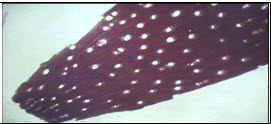
Fig 1a: T.S. of stem entire view of Z. xylopyrus (Magnification 10X). MR- medullary rays

Fig 1b: T.S. of stem enlarged of Z. xylopyrus (Magnification 10X).
Xb- xylem fibres, Xp- xylem parenchyma.

Fig 1c: T.S. of stem showing xylem of Z. xylopyrus (Magnification 10X).
X- xylem.
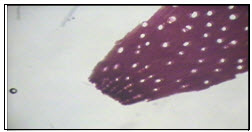
Fig 1d: T.S. of stem pith entire of Z. xylopyrus (Magnification 10X). Pi- pith.

Fig 1e: T.S. of stem pith enlarged of Z. xylopyrus (Magnification 10X). Pi- pith
NOW YOU CAN ALSO PUBLISH YOUR ARTICLE ONLINE.
SUBMIT YOUR ARTICLE/PROJECT AT editor-in-chief@pharmatutor.org
Subscribe to Pharmatutor Alerts by Email
FIND OUT MORE ARTICLES AT OUR DATABASE
Powder microscopy:
Powder microscopic examination showed the presence of sclerenchyma, sclerenchymatous fibre, wood element in stem of Z. xylopyrus (Fig. 2a- 2c).
Powder characters of stem of Ziziphus xylopyrus:

Fig 2a: Sclerenchyma of Z. xylopyrus (Magnification 10X). Sc- Sclerenchyma
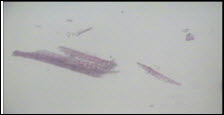
Fig 2b: Sclerenchymatous fibre of Z. xylopyrus (Magnification 10X). Scf- Sclerenchymatous fibre.
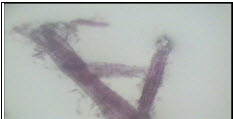
Fig 2c: Wood element of Z. xylopyrus (Magnification 10X). We – Wood element
Phytochemical Investigation:
The results of phytochemical screening of the various extracts of Z. xylopyrus stem revealed the presence of alkaloids, carbohydrates, steriods and sterol, glycoside, saponins, flavonoids, phenolic compounds, triterpenoids (Table No.1). These secondary metabolites are known to possess various pharmacological effects and may be responsible for various actions of Z. xylopyrus.
|
S. No. |
Plant constituents |
Ethanol extract |
Aqueous Extract |
|
1 |
Alkaloids |
+ |
+ |
|
2 |
Carbohydrates |
+ |
+ |
|
3 |
Glycosides |
+ |
- |
|
4 |
Saponins |
+ |
+ |
|
5 |
Proteins and Amino acids |
- |
- |
|
6 |
Phytosterols |
+ |
- |
|
7 |
Flavonoids |
+ |
- |
|
8 |
Phenolic compounds (Tannins) |
+ |
+ |
|
9 |
Acidic compounds |
- |
- |
|
10 |
Aleurone grains |
- |
- |
|
11 |
Insulin |
+ |
- |
|
12 |
Lignin |
+ |
+ |
|
13 |
Triterpenoids |
+ |
+ |
Physicochemical Evaluation parameters: The calculated physicochemical parameters such as ash values, extractive values of the stem of Z. xylopyrus are presented in (Table No.2)
Table No.2: Physical parameters of the stem of Ziziphus xylopyrus (Retz) Willd.
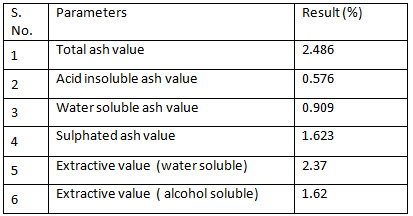
DISCUSSION:
Ziziphus xylopyrus (Retz) Willd. is currently being used in the treatment of various diseases. The standardization of crude is an integral part of for establishing its correct identity. Before any crude can included in an herbal pharmacopoeia, pharmacognostic parameters and standards must be established as per WHO guidelines.
Z. xylopyrus is a plant that has been confused with other species due to their relative similarities. The results, of these investigations could serve as a basis for proper identification, collection and investigation of the plant. The macro and micro features of the stem described, distinguishes it from other members of genera. Powder microscopy and physicochemical parameters are unique to the plant and are required in its standardization. Phytochemical study is also useful to isolate the pharmacologically active principles present in the extract. Previous reports of preliminary phytochemical screening of the various species of Ziziphus suggest the presence of Xylopyrine-A and Xylopyrine-B, the two new 13-membered cyclopeptide alkaloids, β sitosterol, fatty acids and tannins. The information obtained from the ash values and extractive values are useful during the time of collection and also during extraction process. Using these standards, the plant can be differentiated from other related species.
CONCLUSION:
The results of the study can serve as a valuable source of information and provide suitable standards for identification of this plant material in future investigation and application.
REFERENCES:
1. Anonymous (1976), The Wealth of India., Raw materials series, NISCAIR, CSIR, New Delhi, Vol-11, pp.123-124.
2. Ayurvedic pharmacopoeia of India (2006), Govt. of India, Department of ISM&H, published by the controller of publications, Delhi. Part-1, Vol-5, pp.47.
3. Dash SK, Padhy S (2006); “Review on ethnomedicines for diarrhoea diseases from Orissa prevalence versus culture”; Journal of Human Ecology; 20; 59-64.
4. Easu, K (1964), Plant anatomy, John Wiley and sons, New York, 3rd edition, pp. 767.
5. Evans,WC (2002), Pharmacognosy, Saunders Company, Edinburgh, pp. 518-519.
6. Indian Pharmacopoeia (2010), Indian Pharmacopoeia commission, Govt. of India, Ghaziabad, pp.2463, 2550.
7. Jagtap SD, Deokule SS, Bhosle SV (2006); “Some unique ethnomedicinal uses of plants used by the Korku tribe of Amravati district of Maharashtra”; Indian Journal of Ethnopharmacology; 107(3); 463-469.
8. Jain A, Katewa SS, Choudhary BL, Galav P (2004); “Folk herbal medicines used in birth control and sexual diseases by tribals of southern Rajasthan”; Indian Journal of Ethnopharmacology; 90(1); 171-177.
9. Khandelwal KR (2007), Practical Pharmacognosy, Nirali Prakashan, Pune, pp. 149-156.
10. Kokate CK (1986), Practical Pharmacognosy, Vallabh Prakashan, New Delhi, 1st edition, pp. 17-29.
11. Kokate CK, Purohit AP, Gokhale SB (1991), The Text Book of Pharmacognosy, Vallabh Prakashan, New Delhi, 3rd edition, pp. 606-611.
12. Kokate CK, Purohit AP, Gokhale SB (2007), The Text Book of Pharmacognosy, Nirali Prakashan, Pune, 37th edition, pp. 27-28.
13. Meena AK, Rao MM (2010); “Folk Herbal Medicines used by the Meena Community in Rajasthan”; Asian journal of traditional medicines; 5 (1); 19-31.
14. Naidu KA, Khasim S.M (2010); “Contribution to the floristic Diversity and Ethno botany of Eastern Ghats in Andhra Pradesh, India”; Ethno botanical Leaflets;14(1) ; 920-941.
15. O’Brien TP, Feder N, Mc Cull ME (1964); “Polychromatic staining of plant cell walls by toludine blue-O”; Protoplasma; 59(2) ; 364- 373.
16. Reddy KN, Reddy CS, Trimurthulu G (2006); “Ethno botanical Survey on Respiratory Disorders in Eastern Ghats of Andhra Pradesh, India”; Ethno botanical leaflet; 10; 139-148.
17. Sass JE (1940), Elements of Botanical Micro technique. Mc Graw Hill Book and Co, New York, 1st edition, pp. 222.
18. Singh AK, Pandey MB, Singh VP, Pandey VB (2007); “Xylopyrine-A and Xylopyrine-B, two new peptide alkaloids from Ziziphus xylopyra”; Natural Product Research; 21 (12); 1114-1120.
19. The Ayurvedic Pharmacopoeia of India (2008), Department of AYUSH, Ministry of Health and Family Welfare, Govt. of India, Delhi, Appendix Volume-V, pp. 213- 214.
20. Yadav M, Meena AK, Rao MM, Kapil P, Panda P, Chahal J and Nikita (2011); “Review on Ziziphus xylopyrus: A Potential Traditional Drug’; Journal of Pharmacy Research; 4(3); 922-923.
NOW YOU CAN ALSO PUBLISH YOUR ARTICLE ONLINE.
SUBMIT YOUR ARTICLE/PROJECT AT editor-in-chief@pharmatutor.org
Subscribe to Pharmatutor Alerts by Email
FIND OUT MORE ARTICLES AT OUR DATABASE









